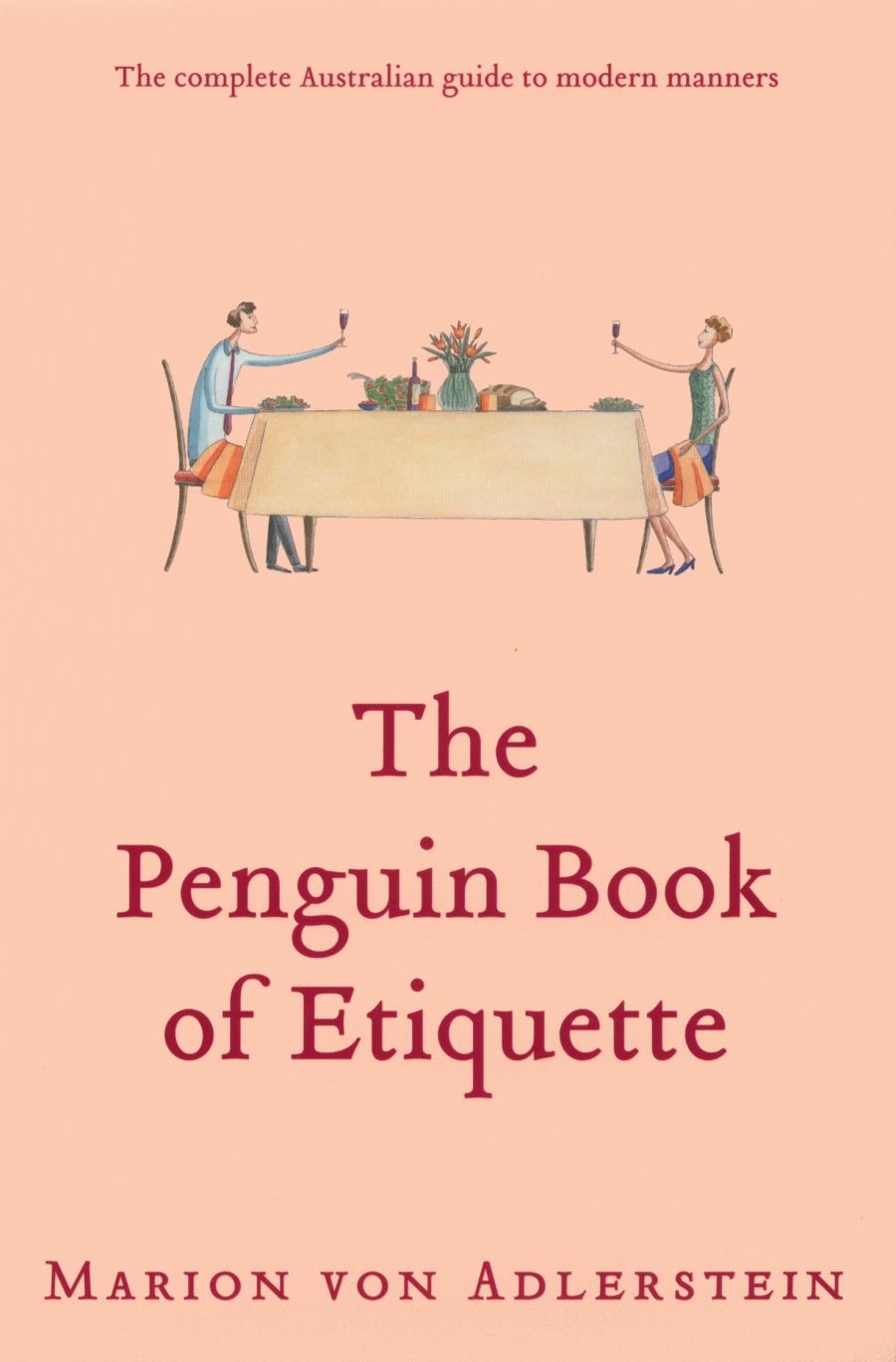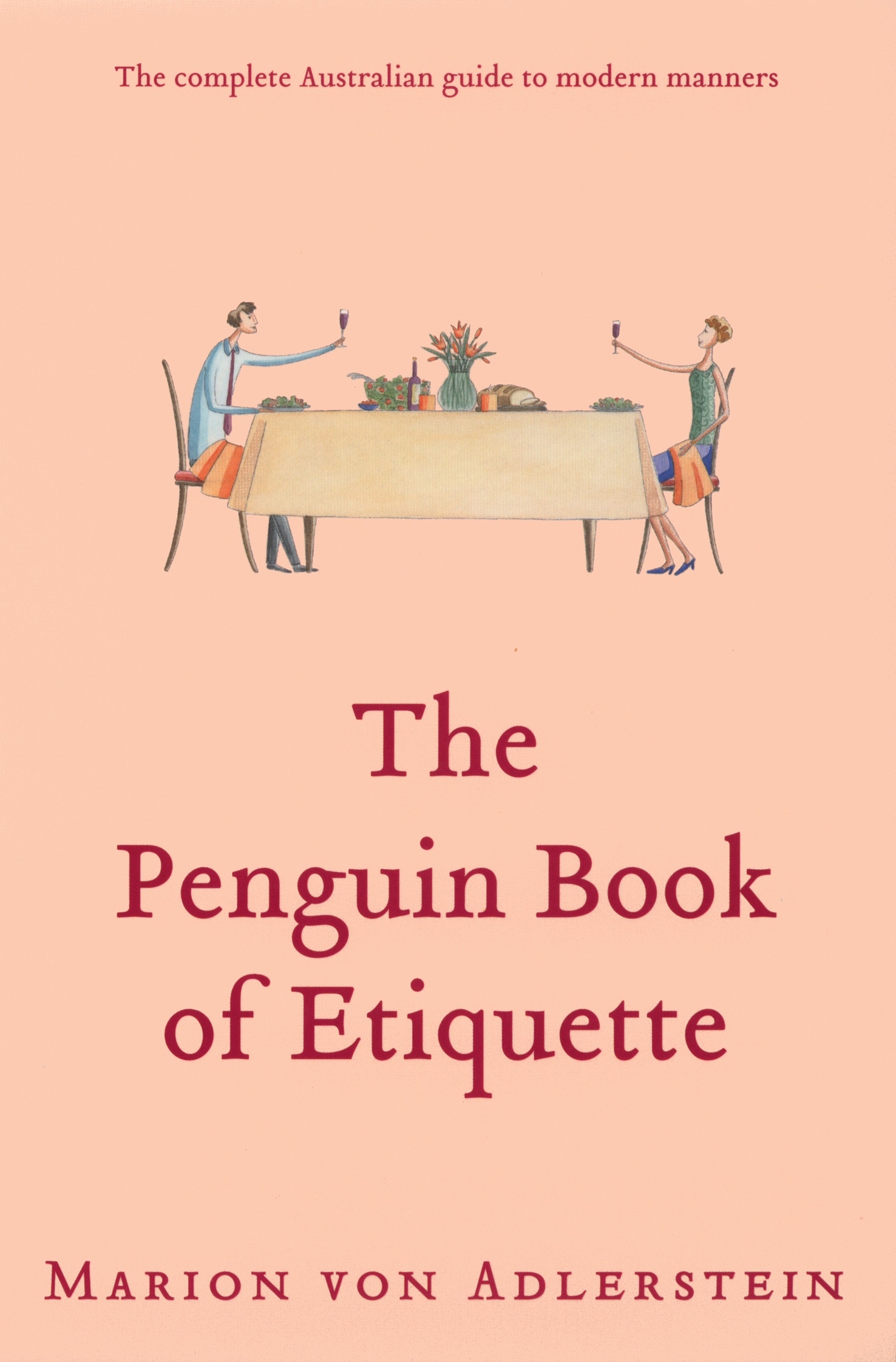
- Free Article: No
- Contents Category: Non-fiction
- Custom Article Title: Manners in the Mosh Pit
- Review Article: Yes
- Article Title: Manners in the Mosh Pit
- Online Only: No
- Custom Highlight Text:
Smugness is an occupational hazard for the writer on etiquette. The exquisite Miss Manners, in Miss Manners’ Guide to Excruciatingly Correct Behaviour, describes the ‘wicked joy’ of her trade: ‘There is that pleasant bubble in the throat, the suppressed giggle at another’s ignorance; the flush of generosity accompanying the resolve to set the poor soul straight; that fever of human kindness when one proclaims, for the benefit of others, one’s superior knowledge.’ Suppressed giggles resound through-out the genre. Surely there’s one coming from the late John Morgan in Debrett’s New Guide to Etiquette and Modern Manners when he suggests that ‘when inviting royalty it is important first to decide, as with any guest, if you are on close enough terms to proffer an invitation’; or that ‘it is bad manners to expel any liquid from any orifice in public, and breastfeeding is no different’.
- Book 1 Title: The Penguin Book of Etiquette
- Book 1 Subtitle: The complete Australian guide to modern manners
- Book 1 Biblio: Viking, $49.95 hb, 502 pp
- Book 1 Cover Small (400 x 600):

- Book 1 Cover (800 x 1200):

There are a few giggles in Marion von Adlerstein’s new addition to the genre, The Penguin Book of Etiquette: The Complete Australian Guide to Modern Manners, but the author’s main concern is the provision of good advice. Her entry on public breastfeeding is perhaps representative: she deems it ‘a choice best left to individuals’, but (given the existence of the John Morgans of this world) suggests that ‘nursing mothers should be aware that it might embarrass some people, especially anyone prudish’. This statement encapsulates the tone of the book. What von Adlerstein lacks in irony, she makes up for in humility: ‘At times during the writing of this book, I have been thunderstruck at my hide in passing myself off as an authority on how to get through life doing absolutely everything right with a minimum of offence. Nobody gets it right all of the time.’
Nobody except, of course, Miss Manners: ‘guilt is an emotion Miss Manners does without, having taken the simple precaution of doing everything right the first time.’
Why etiquette? Most books of this sort feel the need to justify their existence. Often they get stuck one step earlier: What is etiquette? Is it simply courtesy, or a behavioural code used for separating people into classes? Von Adlerstein’s solution is as elegant as any. She speaks of the ‘therapeutic power of courtesy’ – a nice catch-phrase, and one that might give an unfashionable concept some currency in this Californian age. Etiquette, she suggests, is a ‘behavioural “language” endorsed by the herd and understood by every-one’.
Of course, if etiquette were understood by everyone, there would be no need for von Adlerstein, or Emily Post. Some etiquette has root in sense: abstaining from talking when your mouth is full. Other etiquette is poetic, and absurdist (hence Jane Austen): ‘The grandest way to skin a pear is said to be with a teaspoon,’ John Morgan declares.
I have never understood why ‘pleased to meet you’ is so shockingly déclassé. Von Adlerstein allows ‘I’m delighted to meet you at last’, but insists that ‘pleased to meet you’ is ‘an absolute no-no’. Why? I suppose it’s futile to question the premises of any ‘language’, but Miss Manners, a true believer, attempts an explanation: ‘Etiquette opposes any declaration of being pleased to meet someone on the cynical grounds that it may not turn out to be a pleasure.’
Von Adlerstein highlights etiquette’s arbitrariness in some of her most interesting material: appropriate customs at Buddhist, Islamic, Jewish, Greek Orthodox, Indian and Japanese births, deaths and dinner tables. The wealth of information is daunting – what virtuoso of etiquette could remember it all? ‘Unlike in England, where you must keep your hands off the table and in your lap, in France you must keep your hands on the table, otherwise who knows what they might be up to under the table?’ In fact, as the author states in her Introduction, this book is less a guide to etiquette than a guide to life. Somehow, between its covers (dressed impeccably in ‘Tiffany blue’) it tells you everything your mother might have told you, if she had had time. There’s advice on child rearing, the dangers of sudden fame, and how to behave sportingly as a Sporting Parent. Von Adlerstein offers a useful strategy for evicting a straggler: ‘If all else fails, and there are no Wagnerians in the group, put on the “Ride of the Valkyries” and say that, after that, you’re going to play the whole of his weighty opera Parsifal.’ But what if there are Wagnerians in the group? Real Wagnerians, trained in stickability? I suspect there might be a marketing concept here: ‘The Second Viennese School for eviction purposes’, or ‘Andrew Lloyd Webber for rapid dinner party clearance’.
The book tips its cap to the Information Age with brief entries on ‘Manners and the Mobile’ and ‘Netiquette: Niceties on the Internet’. I felt these could have been expanded, but perhaps that would require another book. My favourite section concerns the oxymoronic ‘etiquette in the mosh pit’: ‘Etiquette for guys in the mosh pit dictates that you must lend your support to the person, most often a male, who is being passed around and protect any girl who is near you.’ This may not become the most thumbed section of the book, but I do relish the thought of the young mosher-to-be swotting up on moshing etiquette before the big night out.
Von Adlerstein doesn’t play to the gallery like a Miss Manners, or even a John Morgan, but she knows her material, and she’s nice as well. At last, a writer on courtesy whom you wouldn’t be scared to meet in the street.


Comments powered by CComment